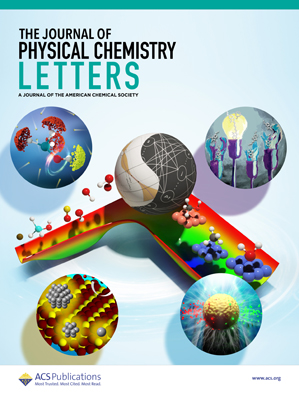Electrocatalytic Nitrogen Reduction to Ammonia Using TiO2-Supported Cu4Cl4(PPh3)4 and Ag4Cl4(PPh3)4 Nanoclusters
IF 4.6
2区 化学
Q2 CHEMISTRY, PHYSICAL
引用次数: 0
Abstract
The electrocatalytic nitrogen reduction reaction (ENRR) offers a sustainable and promising approach for synthesizing ammonia under ambient conditions, providing an alternative to conventional industrial processes. However, challenges such as the inherent inertness of N2 and the competing hydrogen evolution reaction (HER) in aqueous electrolytes hinder ammonia yield and Faradaic efficiencies. This research use TiO2-supported Cu4Cl4(PPh3)4 and Ag4Cl4(PPh3)4 nanoclusters (NCs) with quasi-cubic M4Cl4 cores (M = Ag or Cu) for ENRR investigations. The results reveal that TiO2-supported Cu4Cl4(PPh3)4 NCs achieved an ammonia yield of 4.25 μg·h–1·cm–2 with a Faradaic efficiency (FE) of 53.0% at −0.9 V vs RHE. In contrast, TiO2-supported Ag4Cl4(PPh3)4 NCs produced a yield of 3.60 μg·h–1·cm–2 and an FE of 51.39% at −0.8 V vs RHE. Both NCs on the TiO2 support demonstrated superior performance compared to their unsupported counterparts, underscoring the critical role of TiO2 in improving electron transfer and fostering synergistic effects, thereby boosting catalytic activity. This research offers important insights into the design of supported NCs as high-performance catalysts, advancing the development of environmentally sustainable and energy-efficient approaches for ammonia production.二氧化钛负载Cu4Cl4(PPh3)4和Ag4Cl4(PPh3)4纳米团簇电催化氮还原制氨研究
电催化氮还原反应(ENRR)为在环境条件下合成氨提供了一种可持续和有前途的方法,为传统的工业过程提供了一种替代方法。然而,诸如N2的固有惰性和水溶液中竞争性的析氢反应(HER)等挑战阻碍了氨收率和法拉第效率。本研究使用tio2负载Cu4Cl4(PPh3)4和Ag4Cl4(PPh3)4纳米团簇(NCs)具有准立方M4Cl4核(M = Ag或Cu)进行ENRR研究。结果表明,tio2负载的Cu4Cl4(PPh3)4 NCs在−0.9 V vs RHE下的氨收率为4.25 μg·h-1·cm-2,法拉第效率(FE)为53.0%。相比之下,tio2负载的Ag4Cl4(PPh3)4 NCs在−0.8 V vs RHE下的产率为3.60 μg·h-1·cm-2, FE为51.39%。TiO2载体上的两种纳米碳纳米管的性能都优于未负载的纳米碳纳米管,这表明TiO2在改善电子转移和促进协同效应方面发挥了关键作用,从而提高了催化活性。这项研究为设计支持的NCs作为高性能催化剂提供了重要的见解,推动了环境可持续和节能的氨生产方法的发展。
本文章由计算机程序翻译,如有差异,请以英文原文为准。
求助全文
约1分钟内获得全文
求助全文
来源期刊

The Journal of Physical Chemistry Letters
CHEMISTRY, PHYSICAL-NANOSCIENCE & NANOTECHNOLOGY
CiteScore
9.60
自引率
7.00%
发文量
1519
审稿时长
1.6 months
期刊介绍:
The Journal of Physical Chemistry (JPC) Letters is devoted to reporting new and original experimental and theoretical basic research of interest to physical chemists, biophysical chemists, chemical physicists, physicists, material scientists, and engineers. An important criterion for acceptance is that the paper reports a significant scientific advance and/or physical insight such that rapid publication is essential. Two issues of JPC Letters are published each month.
 求助内容:
求助内容: 应助结果提醒方式:
应助结果提醒方式:


